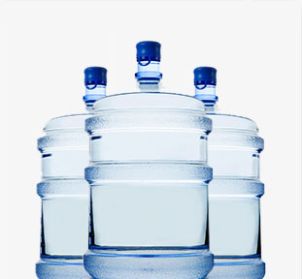
The Usual Suspects: Iron

As we discussed in a previous blog post, iron can be more than a hassle in the home. Its effects range from a metallic taste in drinking water to ruined pipes and appliances.
Anyway you look at it, too much Fe = bad news.
Not all iron is created equal though. Some forms of the element are more damaging than others, or more prevalent in private well water in certain geographic situations. With that said, each and every variation of iron needs a unique filtration solution to help counteract its effects.
Together, the multiple forms of iron make up a formidable crew of waterborne contaminants bent on ruining your day.
Mr. Popular
Dissolved or ferrous iron is the most common form of iron found in private well water supplies. It goes by the aliases of “clear water iron” or “soluble iron” as well. Dissolved iron lives in water with very, very low oxygen levels, but if ever detected, this member of the iron gang sings like a canary. Pour the water into a clear container and leave exposed to the air.
If the water begins to turn cloudy or reddish, you have your culprit rust-handed.
The Twins
Particulate iron is Ferric iron. You know it by the orange-brown stain or scale it likes to leave as a calling card after making an appearance. But this kind of iron comes in two types, filterable or colloidal. Count yourself lucky if the former hits your home as a filter easily removes filterable iron. His brother, colloidal is a different story.
Colloidal iron is made up of small particles, and need the proper micron rating on the filter to remove them. The Culligan Man can always lend a hand when picking your filter.
The Escape Artist
Organic bound iron is a professional fugitive. It attaches itself to organic compounds in the water, like tannins, and sneaks into private well systems. Filtering organic bound iron is a challenge because it cannot typically be removed by particulate filtration. Again, you may need to bring in backup on this case.
The Muscle
The title of the toughest in the bunch may belong to iron bacteria. Unlike its brethren, iron bacteria is actually considered a microorganism, and not actually a type of iron. Bad tasting and odorous water are hallmarks of iron bacteria, on top of slimy growths and reddish-brown stains.
Wondering if you have iron bacteria? Check its favorite hangout: toilet flush tanks.
Good thing, your Culligan Man is always a call away to keep this motley crew under control.
Related Articles
FAQ: Are There PFAS in Bottled Water?
8 min read
What is PFAS Water Testing?
11 min read
Find A Location Near Me

Schedule Your Free
In-Home Water Test
Get better water in your home by scheduling an appointment with your local Culligan Water Expert.
Discover More
See All Articles

FAQ: Are There PFAS in Bottled Water? — qa-testing
Although drinking water quality has always been important, it’s a particularly hot topic these days — especially as researchers learn more about PFAS, sometimes called “forever chemicals.” These substances have […]
7 min read

Explore

Explore
Our Products

Water Softeners
With any of our soft water systems, get more out of your water-using appliances while spending less on energy and detergent.
View Products

Water Delivery
There’s never been a better time to enjoy the convenience of scheduled bottled water deliveries from the Culligan® Water Experts
View Products

Water Filtration Systems
Culligan's water filtration systems have improved water quality for thousands of families worldwide.
View Products